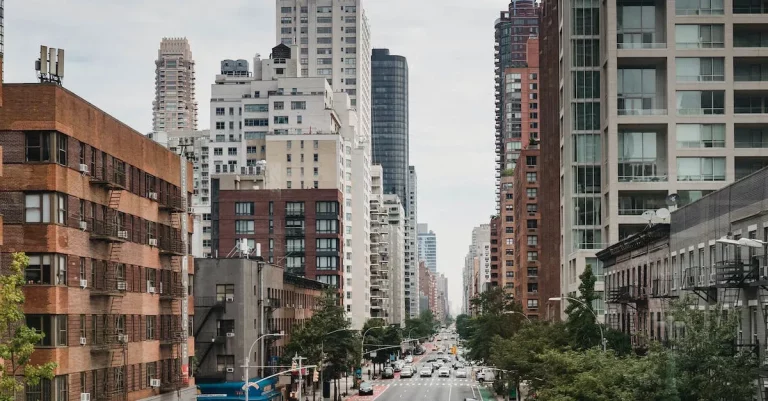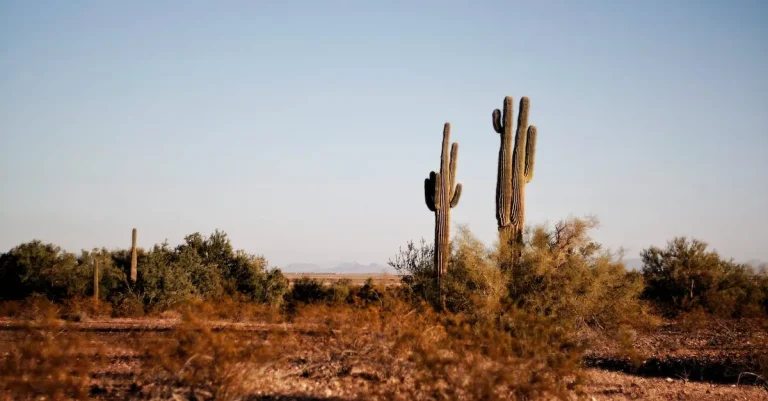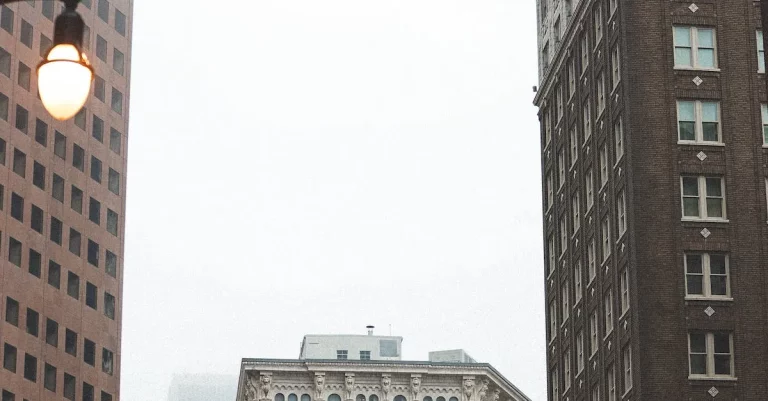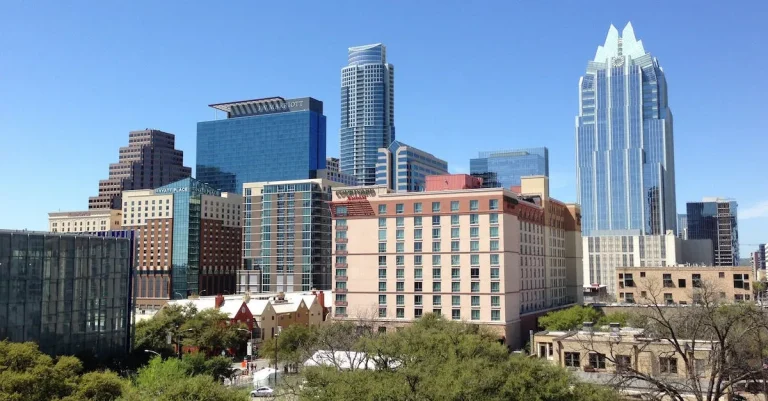The Worst Neighborhoods In San Francisco
If you’re thinking of moving to or visiting San Francisco, you’ll want to know which neighborhoods to avoid due to high crime rates and other issues. While San Francisco is an amazing city full of culture, diversity, and natural beauty, it does have some less-than-desirable areas. In this comprehensive guide, we’ll share the worst neighborhoods in San Francisco based on statistics and local insight.
If you’re short on time, here’s a quick answer: The worst neighborhoods in San Francisco are Bayview-Hunters Point, Tenderloin, South of Market (SoMa), Mission District, and Western Addition.
We examined data on crime, income levels, housing, education, and transportation to identify the neighborhoods struggling with the most challenges. For each area, we’ll highlight the problems residents face along with any bright spots and signs of improvement.
Bayview-Hunters Point
Located in southeastern San Francisco, Bayview-Hunters Point has gained a reputation as one of the worst neighborhoods in the city. It faces numerous challenges, including high crime rates, poverty, lack of resources, and environmental issues.
High Crime
Bayview-Hunters Point has unfortunately been plagued by high crime rates. According to data from the San Francisco Police Department, this neighborhood has consistently recorded higher crime rates compared to other areas in the city.
Violent crimes, including robberies and assaults, are particularly prevalent in this area. Residents often live in fear and are cautious about their safety.
Poverty and Lack of Resources
One of the main factors contributing to the challenges faced by Bayview-Hunters Point is poverty. The neighborhood has a high poverty rate, with many residents struggling to make ends meet. This poverty is often perpetuated by a lack of economic opportunities and limited access to resources such as quality education, healthcare, and job opportunities.
The lack of investment in community infrastructure further exacerbates the situation, leaving residents with few options for improvement.
Pollution and Health Concerns
Bayview-Hunters Point also faces environmental issues that pose health concerns for its residents. The neighborhood is home to industrial sites, including a former naval shipyard, which have left a legacy of pollution.
The presence of hazardous substances in the soil and air has led to health problems for those living in the area. Studies have shown higher rates of respiratory diseases and other health issues among residents of Bayview-Hunters Point.
The challenges faced by Bayview-Hunters Point are complex and require comprehensive solutions. Efforts are being made by local organizations, community leaders, and government agencies to address these issues and improve the quality of life for residents.
However, it is clear that more needs to be done to uplift this neighborhood and provide its residents with the resources and opportunities they deserve.
Tenderloin
The Tenderloin neighborhood in San Francisco has gained a reputation as one of the worst neighborhoods in the city. It is known for its high crime rates, rampant drug use, and numerous other challenges that residents and visitors face on a daily basis.
Crime and Illegal Drug Use
Tenderloin has consistently ranked as one of the highest crime neighborhoods in San Francisco. The area experiences a high level of violent crimes, including robberies and assaults. Drug dealing and drug use are also prevalent in this neighborhood, with visible signs of illegal activities occurring on the streets.
According to the San Francisco Police Department’s crime statistics, the Tenderloin has one of the highest rates of property crimes, such as theft and burglary, in the city. This can make residents and visitors feel unsafe and contribute to a general sense of unease in the neighborhood.
Homelessness
Homelessness is a major issue in the Tenderloin. The neighborhood has a significant population of individuals experiencing homelessness, with tents and makeshift shelters lining the streets. The lack of affordable housing in San Francisco exacerbates this problem, leading to a visible and persistent homeless population in the area.
Local organizations and city officials have been working to address the issue of homelessness in the Tenderloin. Efforts have been made to provide shelter, support services, and housing options for those in need. However, the problem remains a challenge in this neighborhood.
Filth and Blight
Another issue that plagues the Tenderloin is the prevalence of filth and blight. Due to a combination of factors, including a lack of proper sanitation facilities and the high concentration of individuals experiencing homelessness, the neighborhood often suffers from unsanitary conditions.
Public spaces in the Tenderloin can be littered with trash, discarded needles, and other waste, which contributes to an overall sense of dirtiness and decay. This can have a negative impact on the quality of life for both residents and visitors.
Efforts have been made by the city to improve cleanliness and address blight in the Tenderloin, including increased street cleaning and the installation of public toilets. However, these measures have not completely solved the problem, and the neighborhood continues to struggle with maintaining cleanliness.
South of Market (SoMa)
The South of Market (SoMa) neighborhood in San Francisco has gained a reputation as one of the worst neighborhoods in the city. There are several reasons why SoMa is often considered a challenging place to live or visit.
From issues with homelessness and encampments to dirty streets and high rents, SoMa presents a number of challenges for both residents and visitors alike.
Homelessness and Encampments
One of the biggest issues facing the SoMa neighborhood is the prevalence of homelessness and encampments. The area has a high concentration of unhoused individuals, many of whom set up makeshift shelters on the streets.
This can create an unsafe and unsanitary environment, as well as contribute to an overall feeling of unease for those who live or work in the area.
According to recent data from the San Francisco Homeless Count, there are over 9,000 homeless individuals in the city, with a significant number of them residing in SoMa. The lack of affordable housing and limited resources for those experiencing homelessness has contributed to the ongoing challenges in this neighborhood.
Dirty Streets
Another issue that plagues the SoMa neighborhood is the presence of dirty streets. The area is known for its litter, garbage, and debris, which can create an unpleasant and unclean environment. This can be especially frustrating for residents who take pride in their community and want to see it maintained properly.
Efforts have been made by the city to address this problem, including increased street cleaning services and educational campaigns promoting cleanliness. However, the issue persists, and ongoing efforts are needed to keep the streets of SoMa clean and inviting.
High Rents
High rents are a significant concern in the SoMa neighborhood. As one of the most desirable areas in San Francisco, the cost of living in SoMa is steep. This creates a barrier for many individuals and families who may want to live in the neighborhood but cannot afford the high rental prices.
According to a report by Zumper, the median rent for a one-bedroom apartment in SoMa is $3,500 per month. This high cost of living can make it challenging for individuals and families to find affordable housing options, leading to overcrowding and housing instability.
Efforts are being made to address the issue of high rents in San Francisco, including the implementation of rent control measures and the development of more affordable housing options. However, the demand for housing in SoMa continues to outpace the supply, resulting in high rental prices that put a strain on residents’ finances.
Mission District
Gentrification and Displacement
The Mission District, once a predominantly working-class Latino neighborhood, has experienced significant gentrification in recent years. As tech companies have moved into the nearby areas, the demand for housing in the Mission District has soared, leading to skyrocketing rents and the displacement of long-time residents.
Many families and small businesses have been forced to leave the neighborhood as they can no longer afford to live or operate there. This has resulted in a loss of community and cultural heritage that the Mission District was once known for.
Crime
While the Mission District has seen improvements in terms of crime rates in recent years, it still faces challenges in this area. Property crimes such as theft and burglary are relatively common, and there have been reports of gang-related activities in certain parts of the neighborhood.
It is important for residents and visitors to be vigilant and take necessary precautions to ensure their safety. Collaborative efforts between the community, law enforcement, and local organizations are underway to address these issues and make the Mission District a safer place for everyone.
High Cost of Living
The high cost of living in the Mission District is one of the biggest challenges for residents. With rising rents and limited affordable housing options, many people struggle to make ends meet. The cost of groceries, transportation, and other daily expenses is also higher compared to other neighborhoods in San Francisco.
This puts a strain on individuals and families, leading to financial stress and sometimes forcing them to make difficult choices.
According to a study conducted by the San Francisco Chamber of Commerce, the Mission District has one of the highest average rental prices in the city, with the median rent for a one-bedroom apartment exceeding $3,500 per month.
Despite these challenges, the Mission District continues to be a vibrant and culturally rich neighborhood, with a strong community spirit. Efforts are being made to address the issues of gentrification, crime, and the high cost of living, and there are organizations and resources available to support residents in navigating these challenges.
By working together and advocating for affordable housing and community-based initiatives, the Mission District can strive to maintain its unique character and provide a safe and inclusive environment for all who call it home.
Western Addition
The Western Addition neighborhood in San Francisco has long been known for its challenges and struggles. It is considered one of the worst neighborhoods in the city due to various factors such as crime rates, high unemployment and poverty levels, and a lack of resources for its residents.
Crime
One of the major concerns in the Western Addition neighborhood is the high crime rate. The area has unfortunately gained a reputation for being unsafe, with incidents of theft, drug-related crimes, and violence being reported frequently.
Residents often feel unsafe walking the streets, especially at night, and this has had a significant impact on the overall quality of life in the neighborhood.
Unemployment and Poverty
The Western Addition neighborhood also faces significant challenges in terms of unemployment and poverty. Many residents struggle to find stable employment opportunities, leading to high unemployment rates.
This lack of employment options contributes to the cycle of poverty experienced by many individuals and families in the area. As a result, the neighborhood faces economic disparities and struggles to provide basic necessities for its residents.
Lack of Resources
In addition to crime and economic challenges, the Western Addition neighborhood also suffers from a lack of resources. Access to quality healthcare, education, and social services can be limited, making it difficult for residents to access the support they need.
This lack of resources further exacerbates the issues faced by the community and hinders efforts to improve living conditions and opportunities for its residents.
Efforts are being made by community organizations, local government, and residents themselves to address the issues faced by the Western Addition neighborhood. Initiatives focused on improving safety, increasing employment opportunities, and providing better access to resources are being implemented to bring about positive change.
While progress is being made, there is still much work to be done to uplift the neighborhood and improve the overall well-being of its residents.
For more information on the Western Addition neighborhood in San Francisco, you can visit the official website of the City and County of San Francisco.
Conclusion
While San Francisco has its share of problems, it remains a world-class city full of diversity and opportunity. By avoiding certain high-crime, low-income areas, you can maximize your enjoyment and safety during your visit. With smart urban planning and community engagement, we hope these struggling neighborhoods can experience revitalization in the coming years.








